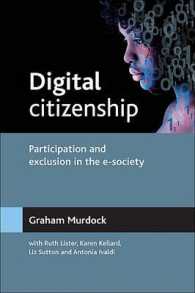Full Description
Scientists and engineers have been involved in medical radiology from the very beginning. At times advances in this field occur at a tremen dously fast pace. Developments in radiological diagnostics have - technologically and medically speaking - focused on morphology. At present, computer-aided tomography (CAT) is at a high point in deve1opment, medical application, and validation. The preconditions for this success were rapid advances in electronics and computer technology - in hardware and in software - and an unexpected cost reduction in these fields; the co operation of various scientific disci plines was also essential. Functional radiological diagnosis has been neglected in part, owing to the emphasis on morphology, but alone the synthesis of morphology and function prornises further advances. Apart from the limited capabilities ofuItrasonic techniques there is no way other than using X-rays to carry out functional studies of organs and their systems through an intact body surface. It is frequently necessary to do further processing and evaluation of image series which have been recorded from the morphological viewpoint. This further picture processing may be of selected points (pixels) in the image, of certain regions of interest (ROI), or of the overall picture. For the measure ment of rapid phenomena, such as the blood flow in the main arteries, high image-frame rates are required, and at the moment these can only be achieved with cinemascopic techniques. For slower processes, other techniques such as videography have some advan tages.
Contents
Welcoming Address.- I. Physiology.- Physiological Aspects Concerning the Diagnostic Analysis of Circulatory Dynamics.- II. Pharmacology of Contrast Media.- Contrast Media for Cardiovascular Analysis.- The Pharmacological Effect of Contrast Media on Renal Circulation Measured by Means of Angiodensitometry.- III. Technique of Injection.- Technique for Injection of Contrast Medium.- Model Experiments for Angiocinedensitometry.- IV. Physical and Technical Basics for the Radiological Analysis of Circulation.- Problems of Choice of Reference System for Quantitative Radiological Circulation Analysis.- Information Content of Cinedensitometric Blood Flow Measurements.- Problems of Different Methods of Radiographic Absorptiometry of Circulation.- Digital Videodensitometry: Some Approaches to Radiographic Image Restoration and Analysis.- Flow Measurements by Videodensitometry.- Influence of Time Resolution in Cine and Video Cardangiography.- Automated Digital Image Processing for Hemodynamic Investigations.- Application Fields of Computer Angiography.- Demonstration of Dopamine Effect in Dog Kidneys by Computer Angiography.- V. Clinical Applications and Results.- Roentgen Cinedensitometry of Blood Circulation.- Arterial Blood Flow.- Coronary Flow Measurements Using Cinedensitometry.- Survey of Techniques for Measuring Myocardial Microperfusion.- Densitometric Analysis of Cerebral Blood Flow.- Angiocinedensitometry of Renal Blood Circulation by ECG Controlled Injection.- Results of Blood Flow Measurements.- Cinedensitometric Examinations of the Human Abdominal Aorta.- Cinedensitometric Measurement of Flow in the Femoral and Iliac Arteries During Angioplasty.- Venous Blood Flow.- Determination of Portal and Arterial Liver Hemodynamics by Angiodensitometry.- Videodensitometric Measurement of Venous Return from the Lower Limb.- Stenoses.- Computer Aided Densitometric Evaluation of Coronary Cineangiograms.- Quantification of Coronary Stenoses.- VI. Angiographic Studies by Image Subtraction.- Systems for Digital Diagnosis of Vessels.- Analysis of the Circulatory System Using Intravenous Contrast Medium Injections.- Importance of Contrast Agent Bolus in Intravenous Subtraction Angiography.- Analytical Function Studies Using Digital Intravenous Angiography as a Method for Quantitative Analysis of the Circulation.- Functional Possibilities with the Digital Vascular Imaging System.- Digital Subtraction Angiography as a Control Procedure After Surgery and Percutaneous Transluminal Angioplasty.- VII. Dynamic Studies by Computed Tomography.- Bolus Geometry and Dynamics After Intravenous Injection of Contrast Media.- The Chronogram — Principle and First Results.- Renal Perfusion Studies by Means of CT.- Dynamic Computed Tomography in Abdominal Tumors: New Aspects for Differential Diagnosis.








